Student-led gravitational waves project (wk 3)
Sonification Week 3 Blog Post
Week 3 Project Aims
For the third week of this project we shifted our focus further away from experimenting with coding programmes to exploring audio editing software and more of the sonic possibilities available in the data we had been working with.
Our aim for this week was to take our experiments and proof of concepts and begin to refine and finalise them. We had also made the decision that for a final outcome we would pursue an art installation.
Summary of Week 3
- Monday was a continuation from last week’s experimentation with the audio workstation Ableton Live. Our focus was divided, we tried to emphasise key points in the data by experimenting with panning effects across two speakers; strategically moving sounds across the stereo field in order to highlight specific characterstics in the data. We also experimented with sonifying a colour and black and white image of the black holes colliding in Strauss in the hopes of it being another addition to the soundscape.
- Our meeting the following day saw the group working more independantly. One worked on finding variation in the sonification in an attempt to pull it away from white noise, another worked on splitting the data of the H1 strain into layers so that each individual layer could be sonified, which they then were by the rest of the group who continued to experiment with them in Ableton. At the end of the day we decided as a group we wanted to be more focused in creating a final idea and really tried to start picturing what we wanted the final product of this project to look like, if it should just be an audio file, or if there should be a visual element, or maybe something even more immersive.
- We then had another informal meeting with our supervisors on Wednesday where we discussed our progress and ideas moving forward. We talked about our ambitions of creating an immersive experience of our data through an installation piece, with speakers, vibrations through the floor (to create the effect of ‘feeling’ the gravitational waves) and accompanying visuals projected onto the floor or wall. We were then provided with tools to experiment with these ideas; a Logitech 5.1 surround sound speaker system with a subwoofer for the vibrations, and a projector and screen for the visuals. We were also taught how to route the different audio tracks to different speakers so that the 5 speakers would play different components of the sonification from different locations, making it feel more like an environmental piece. Finally, we decided to pursue the Tic Space in the Art Department as the location for this installation.
- On Thursday we began building upon the knowledge and skills aquired from experimenting with our proof of concept piece to create our final sonification. We decided to create a new track using the split layers from the H1, V1 and L1 strain to create one cohesive piece, with the different strains assigned to low, medium and high frequencies which will then be assigned to different speakers. We also experimented with mapping the pitch and volume of the different layers in an attempt to help make each layer sound more cohesive when played through each speaker, one method we used to achieve this was pitching certain tracks to a note on the pentatonic F scale, which also helped give the sonification a more musical and cohesive element which counteracted the stiff, robotic sounds created in Strauss.
- On Friday, we aimed to create a 5.1 track to test the speaker set up with. Continuing work with Ableton, using methods such as modifying the pitch, reverb and volume to strengthen the main event and relationships between the each of the points in the data, like the use of a staggered entry bass drop to emphasise the key peak of the data. We also experimented with Hydra, a visual synthesizer to create a visual component to compliment the soundscape. Taking a more interpretive approach in order to replicate the colour scheme used in the gravitational waves graph, to match the timescale of the data and to give a representational appearance of the collision event at 30 seconds to coincide with the sonification.
Black Hole Sonification:
After an insightful meeting with our supervisors on Wednesday, we decided to start creating our final sonification.
We began this process by obtaining the different gravitational wave data from the different LIGO detectors across the world, and began plotting them onto graphs and sonifying them.
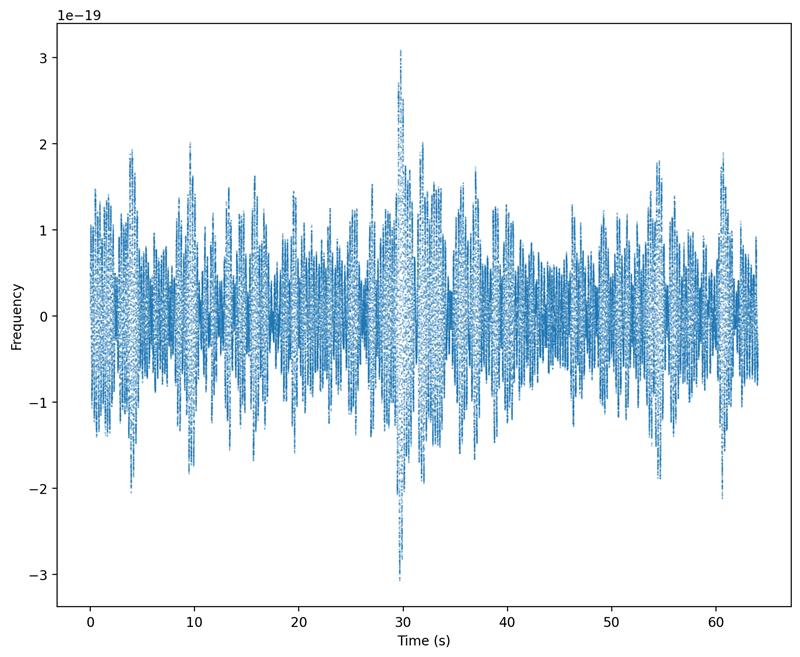
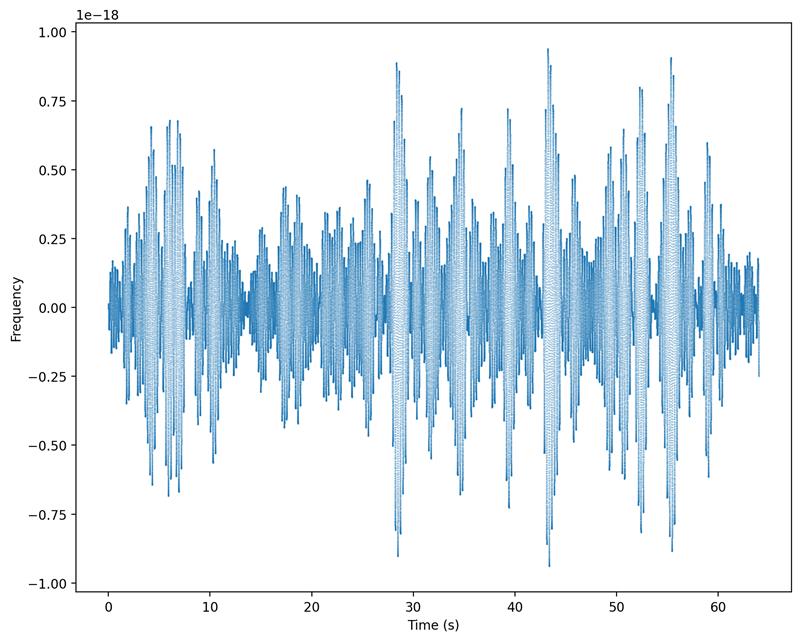
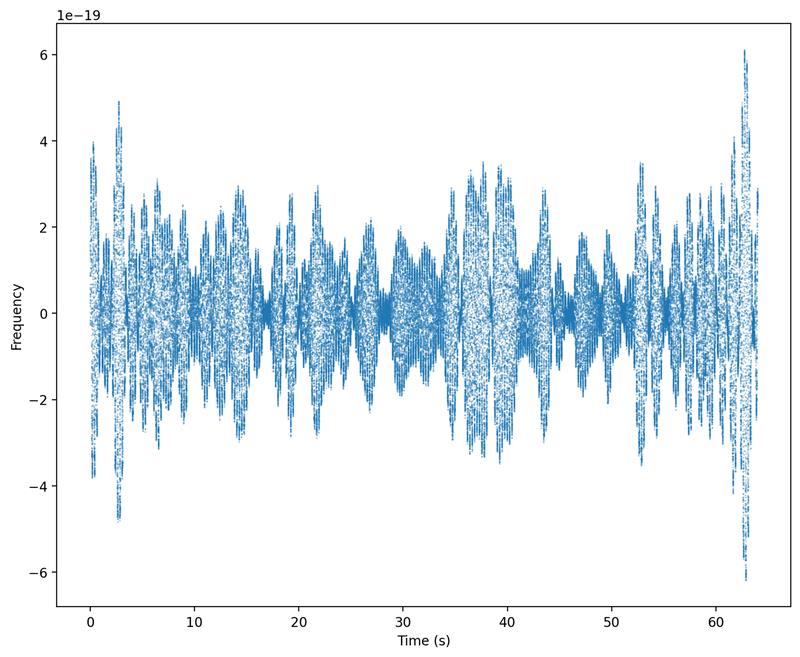
We then separated each of them into three layers corresponding to the sound frequency ranges, highs, mids and lows. For example, here are the different layers of the H1 data.
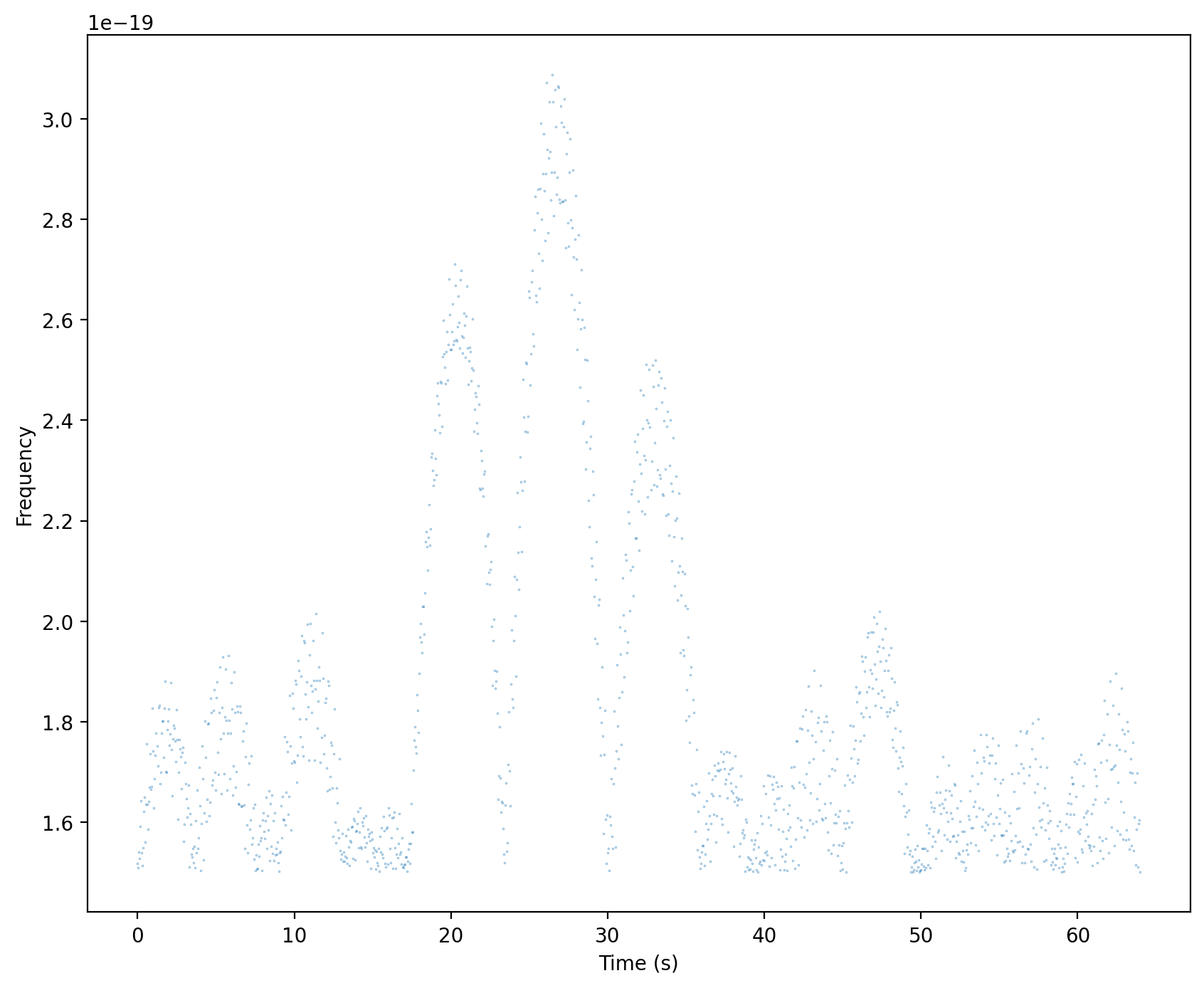
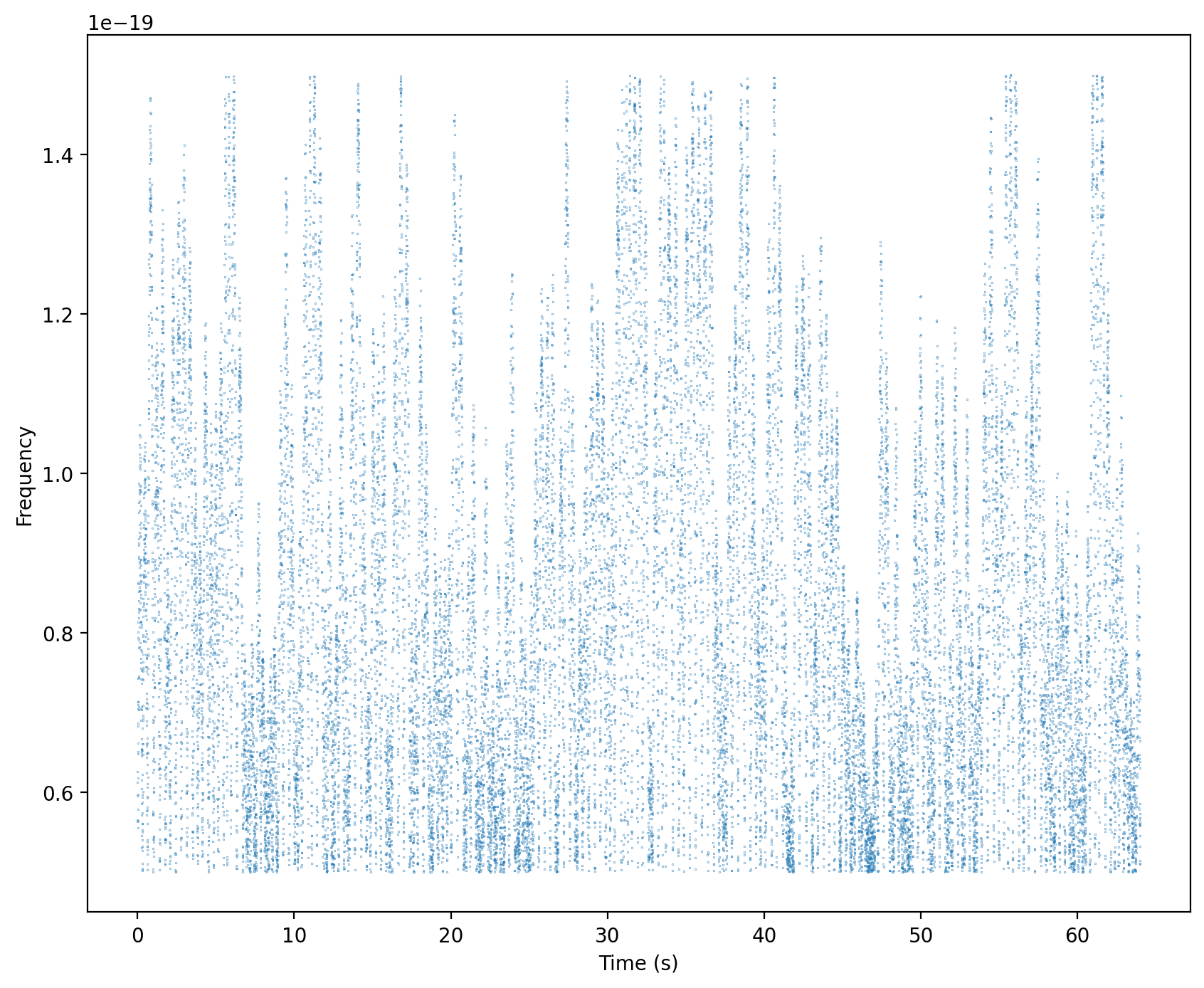
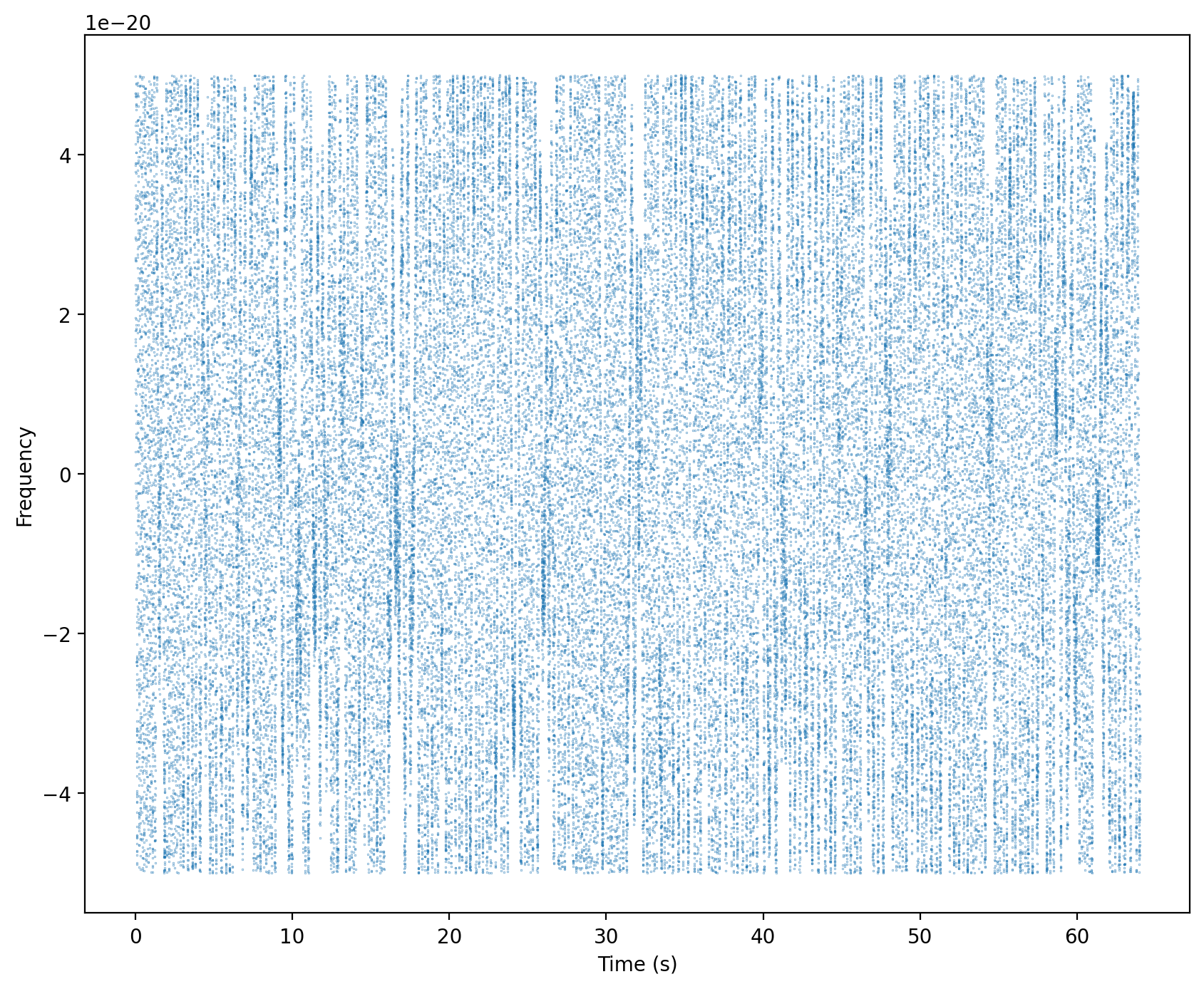
We encountered some issues importing the files in Ableton as the software automatically applied a ‘warp’ feature, which stretched and manipulated the files in an attempt to synchronising their tempos, however it had a different interpretation of the tempo for each file so it just made a mess. After overcoming this issue we began trying to work out which layers we wanted playing in which speakers and we came up with these configurations:
The subwoofer would play the low frequency sonifications of each H1, L1 and V1 strain. The front left speaker would play the high frequencies of H1 and L1 while the front right speaker would play the mid frequencies. Then the rear left and right speakers would play the high and mid frequencies of the V1 strain.
We also thought another option could be the front left speaker could play both the high and mid of H1 and the front right could play both the high and mid of L1, instead of having both high frequencies in one speaker and both mid frequencies in another.
Week 3: Interdisciplinary Teamwork
Below is a summary of how our collaborative skills have been challenged and refined across week 3, featuring some student quotes.
This week we have continued to fine-tune our abilities to work collectively, with everyone showing eagerness and enthusiasm for the project. All four of us have been able to contribute despite our contrasting subject backgrounds. A physics student expressed how it was exciting to be able to take a more ‘creative and open approach’ to data for a change.
At the beginning of the week, the group seemed a bit compartmentalised with everyone working on different things, and there was some concern expressed for working in this manner. There was also a moment early in the week where collectively we felt as though we had hit a wall. We felt we were losing sight of our goal and had experienced many complications with the coding which caused a lot of frustration. Friction was also possibly experienced in the different students’ approaches to the sonification. As the arts students’ eagerness to creatively interpret the data conflicted with the physics students interest in preserving the data, with some students mentioning how they felt as though they had to ‘compromise’ to avoid ‘rocking the boat’.
However, we had a focused group discussion about where we were heading, what we wanted to achieve by the end of the project and what we can do to get there. This was a vital moment that helped redefine our focus and direction allowing us to move forward with the project. Moving forward, all students highlighted their enthusiasm for the newfound direction the project had taken, realising just how much potential there was and how much we could present with our project - to the extent that some even expressed how it was intimidating how many aspects and moving parts there were in our plan for the final installation. Despite this, there was also confidence that as a group, we would be able to achieve this.
Our end goal feeds really well into our interdisciplinary practice as it represents a physics phenomena in the form of music and art. We are also engaging in a diverse array of mediums to produce this; further utilising our varying fields and strengths as a collective.
## Aims for Week 4
After the final session of this week, students expressed feeling ‘enthusiastic’, ‘inspired’ and ‘hopeful’. Next week we aim to further experiment with the surround sound speaker system and plan more precisely how the installation should be curated, with further exploration into panning effects and how the soundscape will behave within the space. In addition to extended investigation into the visual and tactile elements of the installation in an attempt to make the data and installation even more accessible and experiential.
Enjoy Reading This Article?
Here are some more articles you might like to read next: